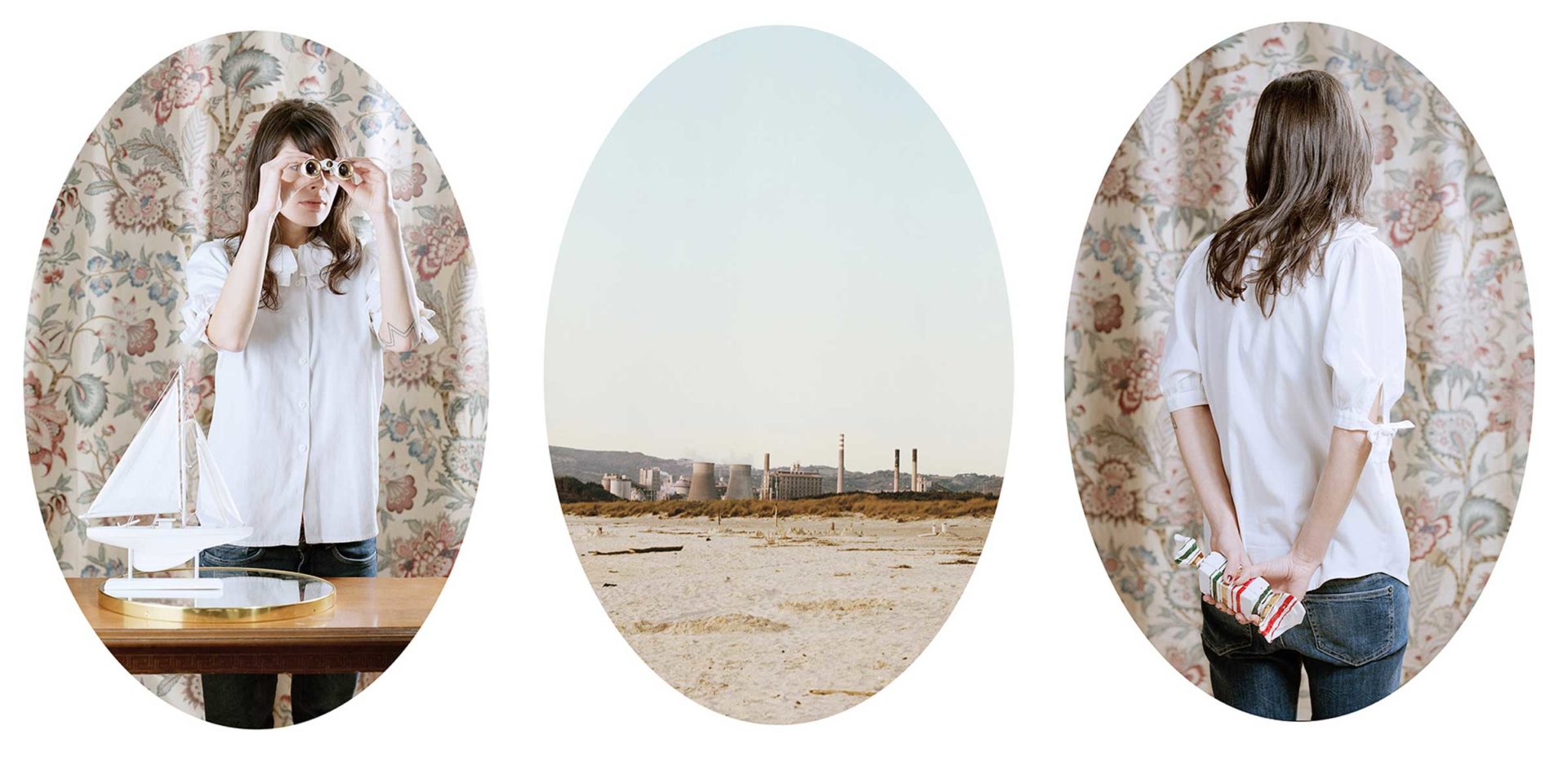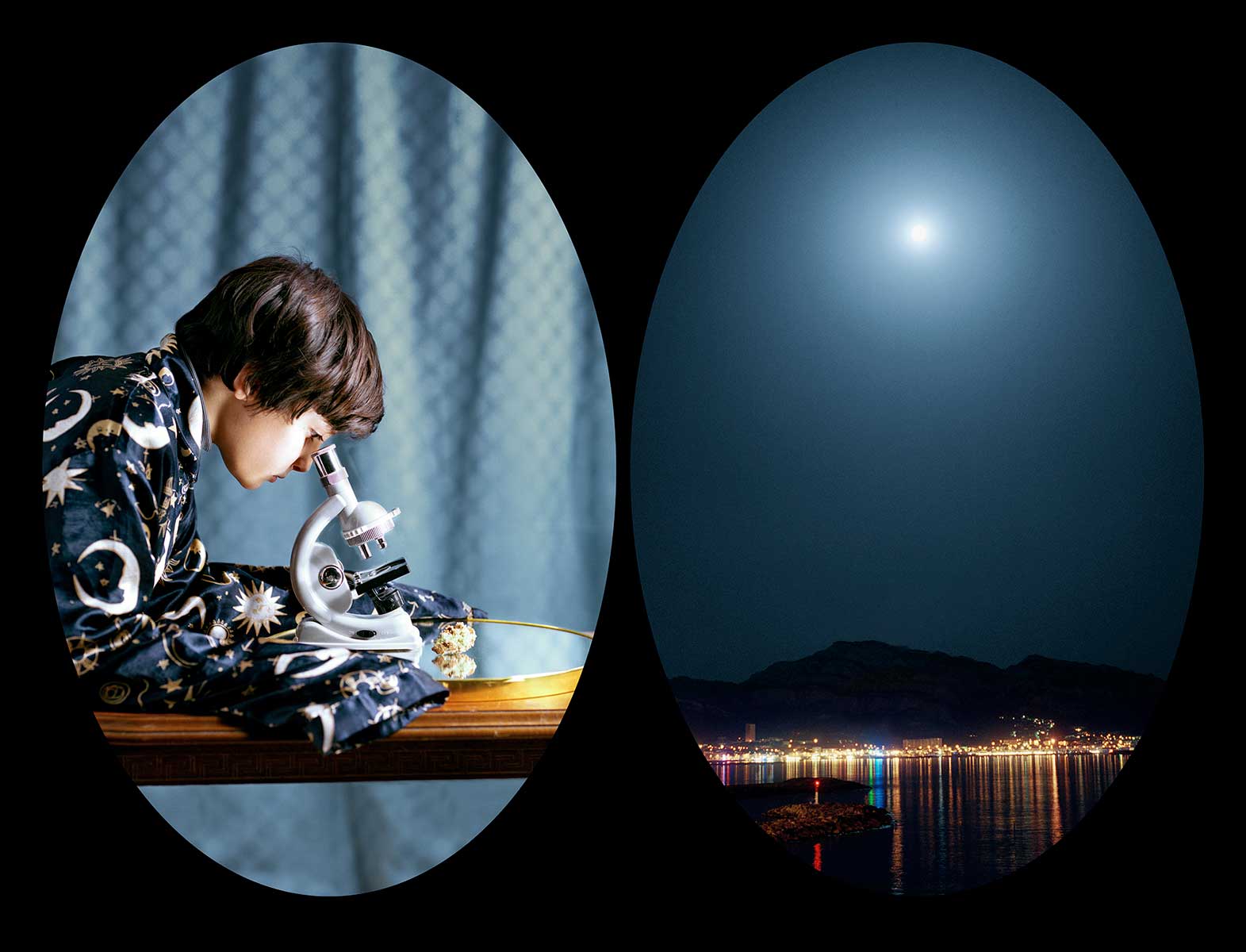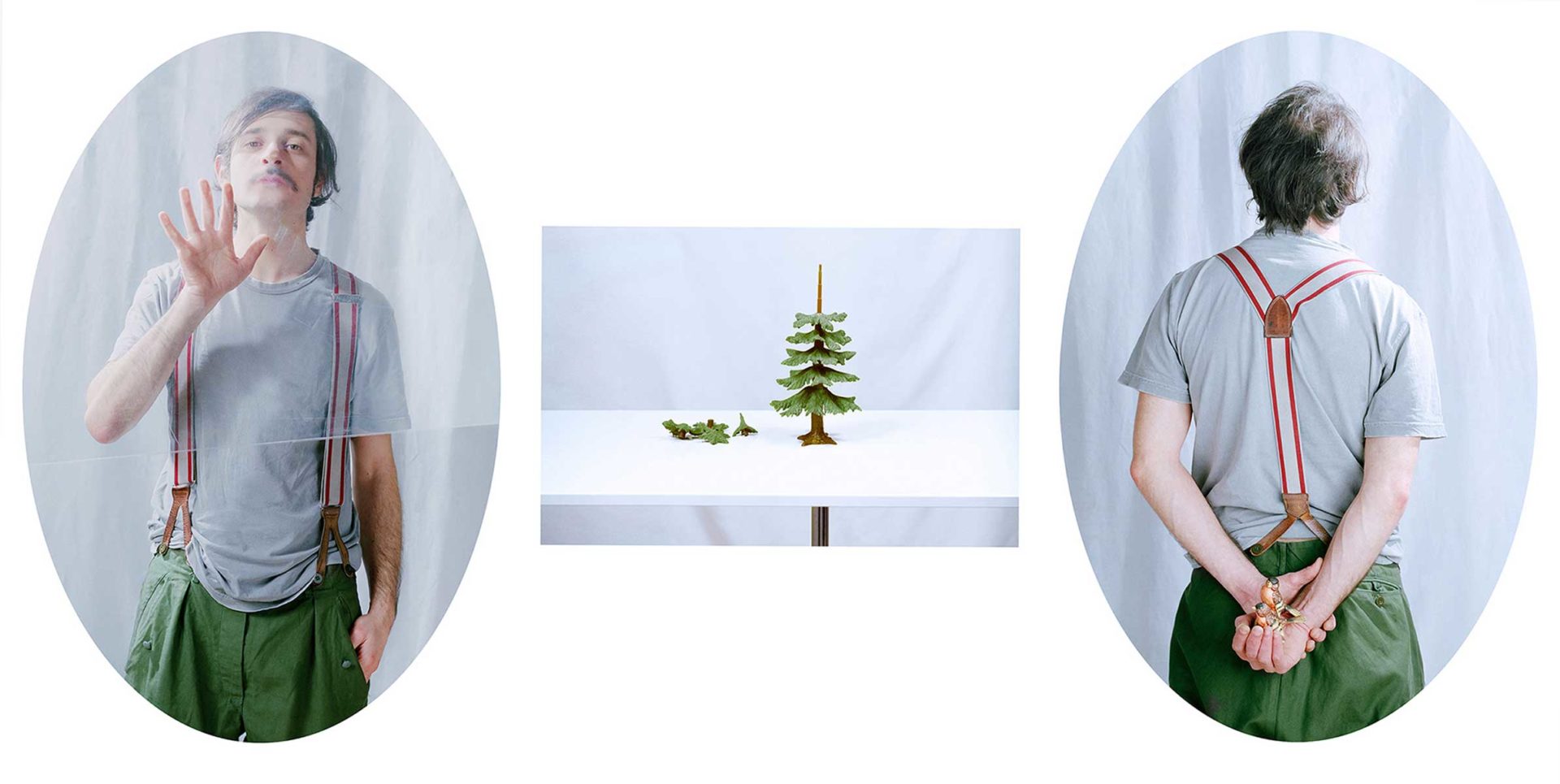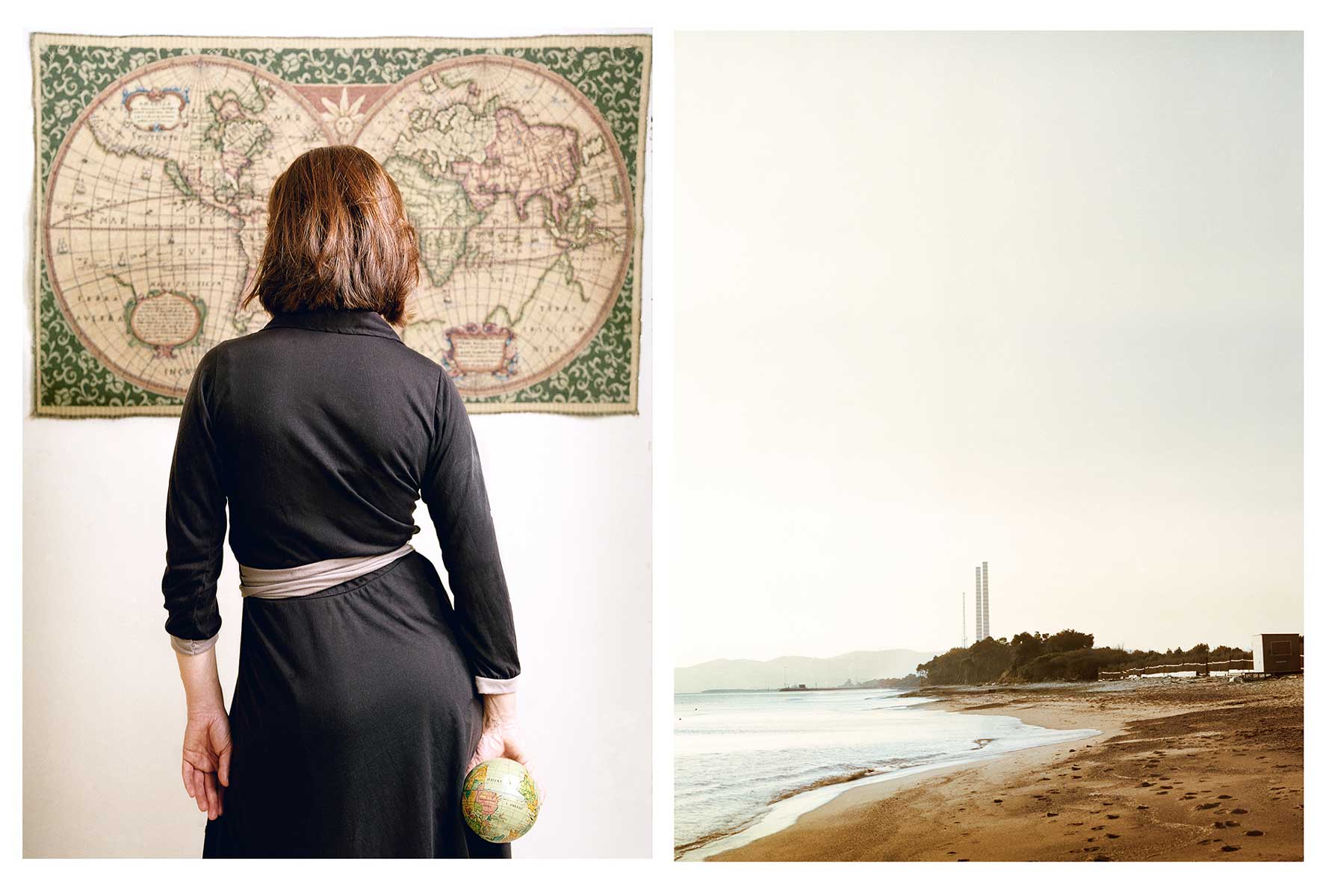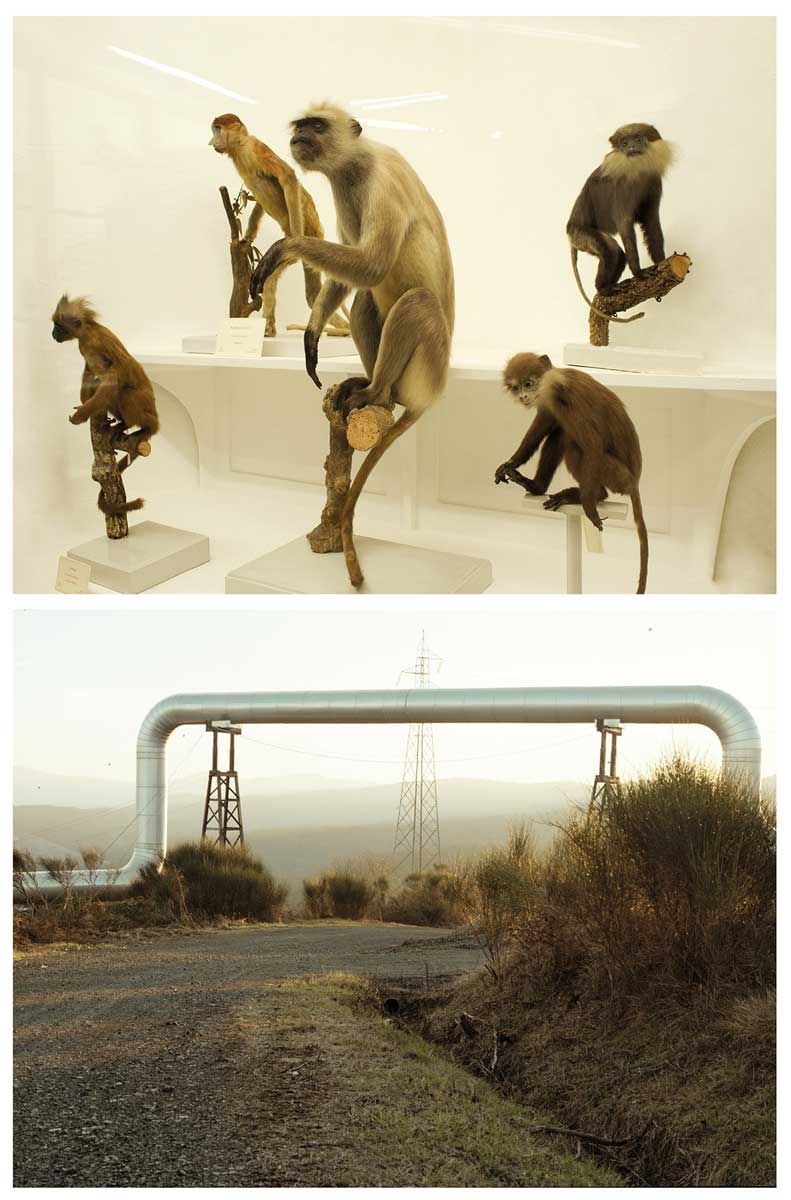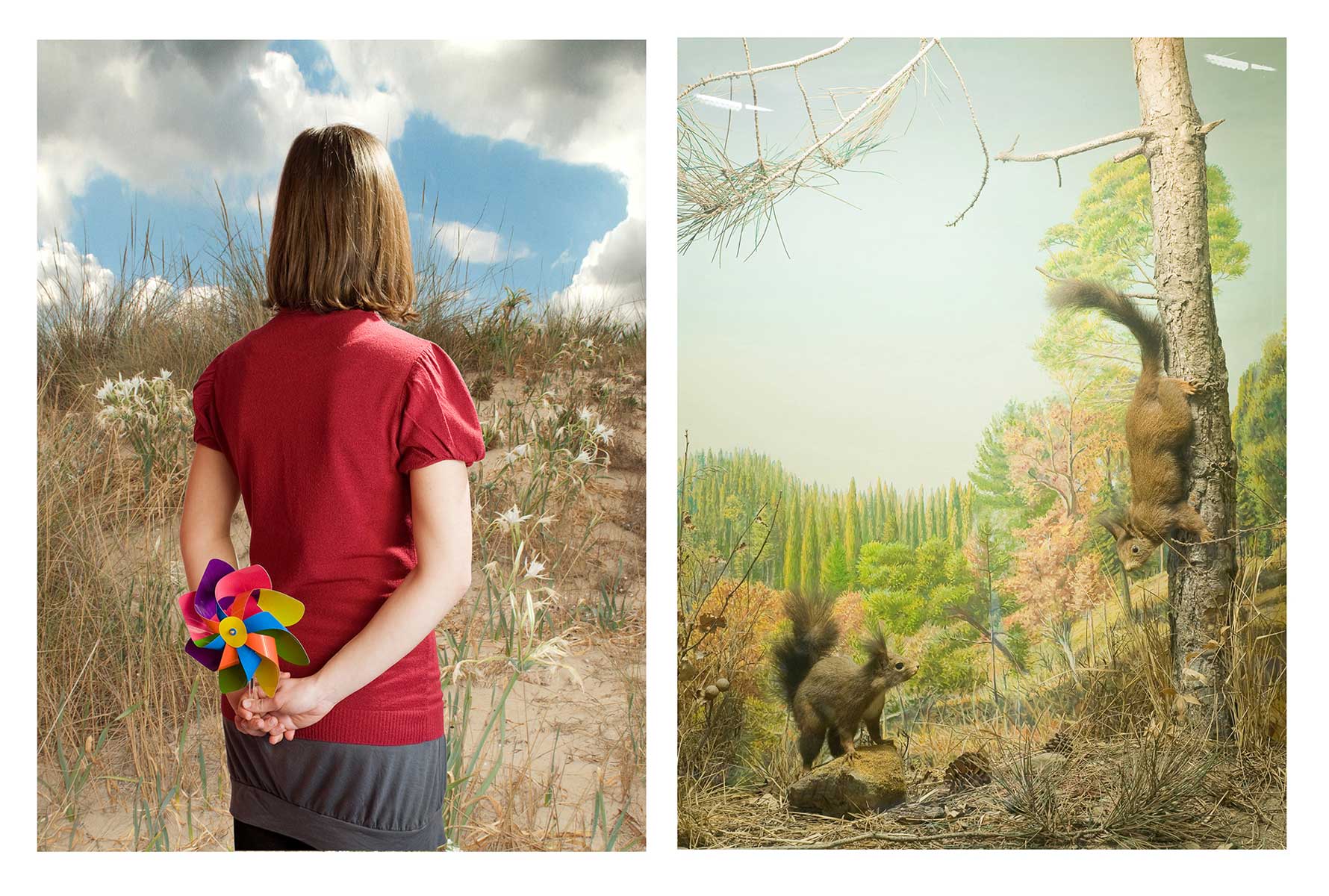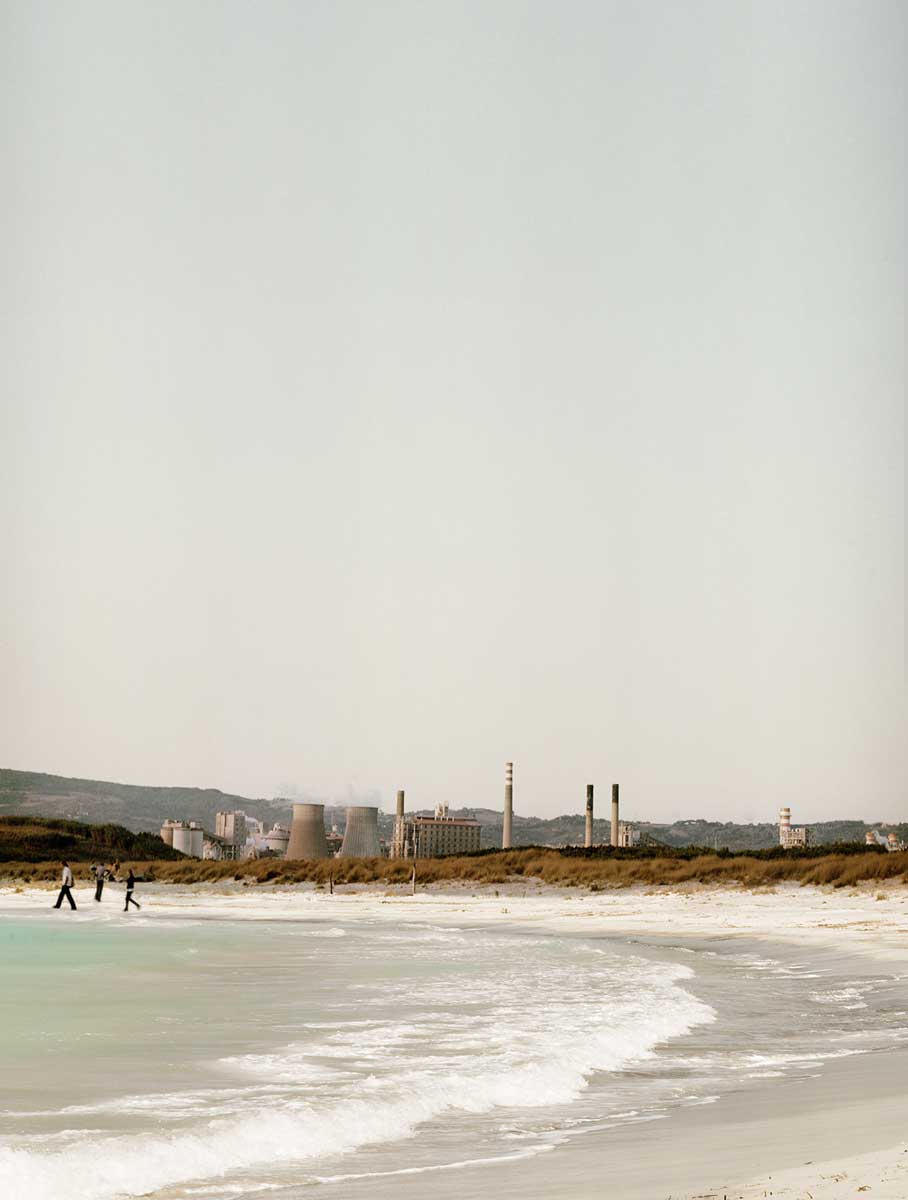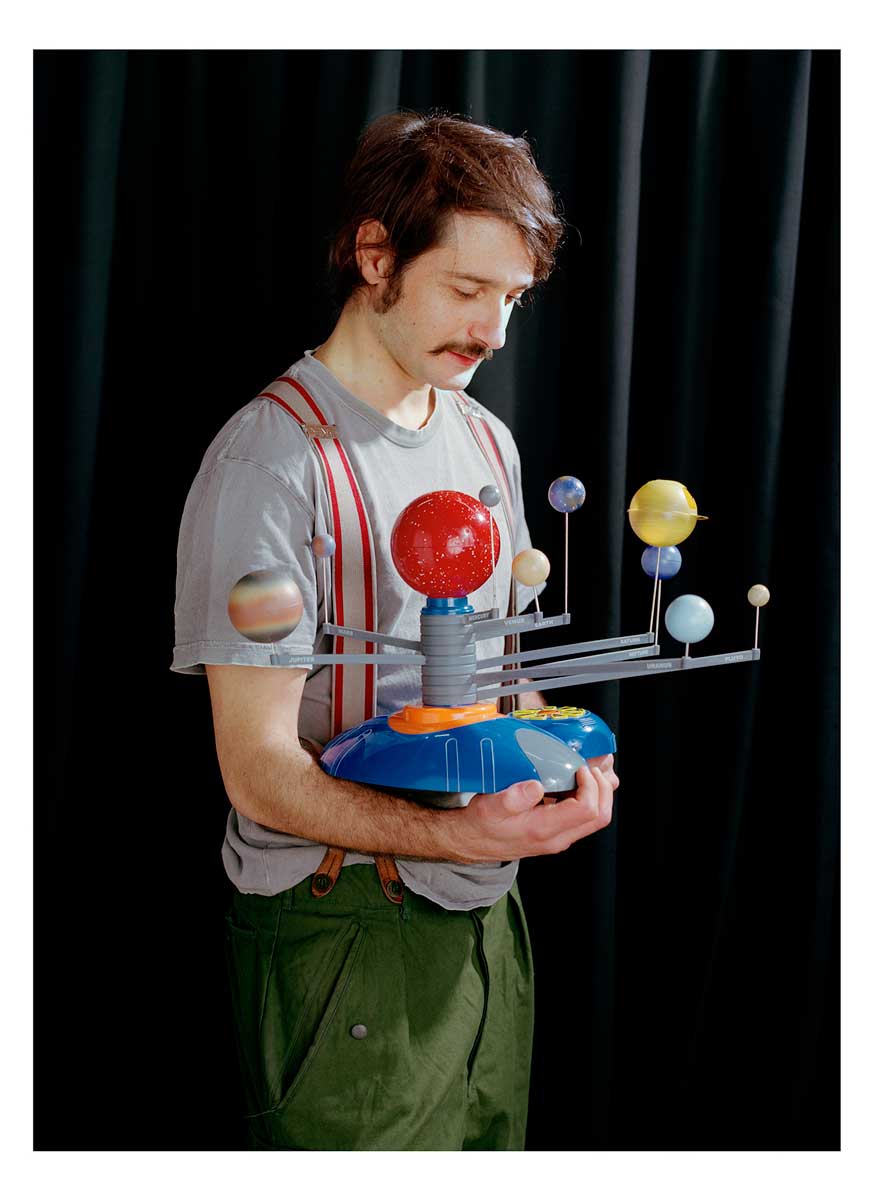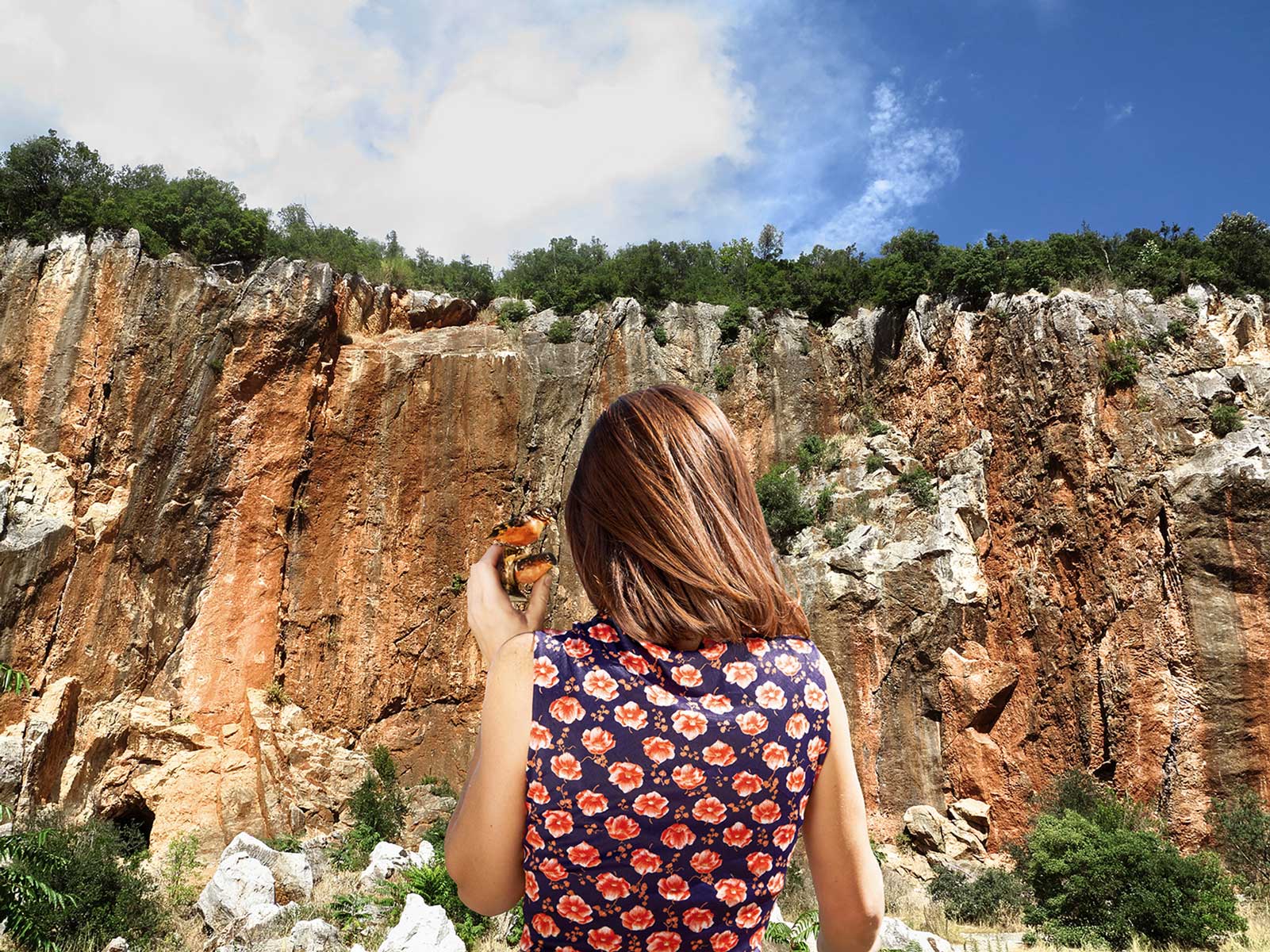Sottovetro
(2011)
Sottovetro affronta il tema del paesaggio indirettamente. Sono immagini in cui emerge la difficoltà di distunguere tra il naturale e l’artificiale. Binocoli, carte geografiche e microscopi per studiare qualcosa che sta lontano da noi, difficile da scorgere ad occhio nudo, qualcosa che ci parla della distanza che lʼuomo contemporaneo ha posto tra sé e la natura. Lo spazio in cui ci muoviamo è oggigiorno ampliato, artificialmente, da una tecnologia sempre più avanzata e invasiva, che favorisce lo sviluppo di estensioni immateriali e dimensioni virtuali. Quello tra uomo e natura sembra essere un amore perduto, un rapporto entrato in un problematico conflitto che apre a scenari carichi di incertezze. Nei dittici, di forma rettangolare, la relazione fra le immagini si fa più ermetica. Le corrispondenze silenziose formano dei vuoti inquietanti che vengono riempiti con un sofferto senso d’impotenza. L’artista accosta le scimmie del Museo della Specola all’impianto geotermico di Larderello. Gli animali imbalsamati, conservati in una teca, si trovano vicino a un paesaggio che appare visivamente inquinato da chilometri di tubature zincate. Una dicotomia tra naturale e artificiale che, costante in questo lavoro, innesca un cortocircuito semantico che coinvolge il concetto stesso di natura. La presenza umana, che nei dipinti agisce come misura della vastità, assume diversa valenza: non consente più al fruitore di proiettarsi nel paesaggio rappresentato, ostacolandone anzi la visione. Guardano, osservano e, deluse, voltano le spalle al pubblico. Tracciano con la loro coreografia muta una fenomenologia minima dello sguardo. La nostalgia per il tempo in cui la natura era tutta da esplorare è evocata dagli oggetti presenti nelle fotografie, che sovrapposti al ricordo dell’infanzia, trasformano le figure in allegorie di una purezza originaria.
english text →
Sottovetro addresses the theme of landscape indirectly. Are images where emerges the difficulty of distinguishing between the natural and the artificial. Binoculars, maps and microscopes to study something that is far from us, difficult to see with the naked eye, something that speaks to us of the distance that the contemporary man has placed between himself and nature. The space in which we move is now artificially extended, by an increasingly advanced technology and invasive, which encourages the development of intangible extensions and virtual dimensions. Between man and nature seems to be a lost love, a relationship entered into a problematic conflict which opens to scenarios full of uncertainties. In the diptychs, rectangular in shape, the relationship between the images becomes more airtight. The quiet correspondences are disturbing gaps that are filled with a sense of powerlessness suffered. The artist combines the monkeys of the Museum’s Specola geothermal plant in Larderello. Stuffed animals, preserved in a reliquary, close to a landscape that appears visually polluted by kilometers of galvanized pipes. A dichotomy between the natural and artificial that constantly in this work, triggers a semantic short circuit involving the concept of nature. The human presence in paintings acts as a measure of scale, here different takes on value: no longer allows the user to project himself into the landscape represented by hindering the vision. Watch, observe, and, disappointed, turn their backs to the audience. Draw with their silent choreography outline an essential phenomenology of looking. Nostalgia for the time when nature was be exploring is evoked by objects in the photographs, which overlapped to the memory of childhood, transform the figures in allegories of original purity.
